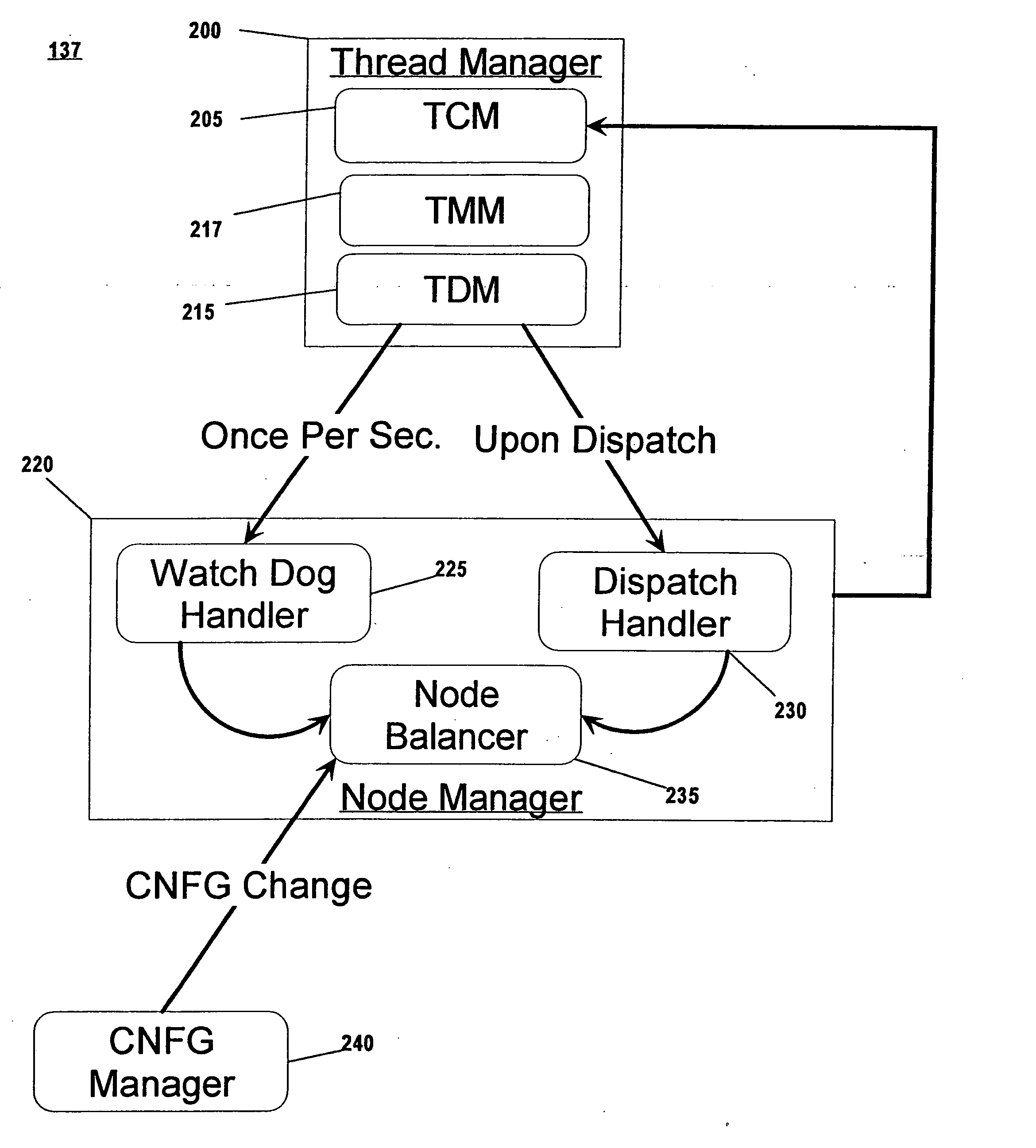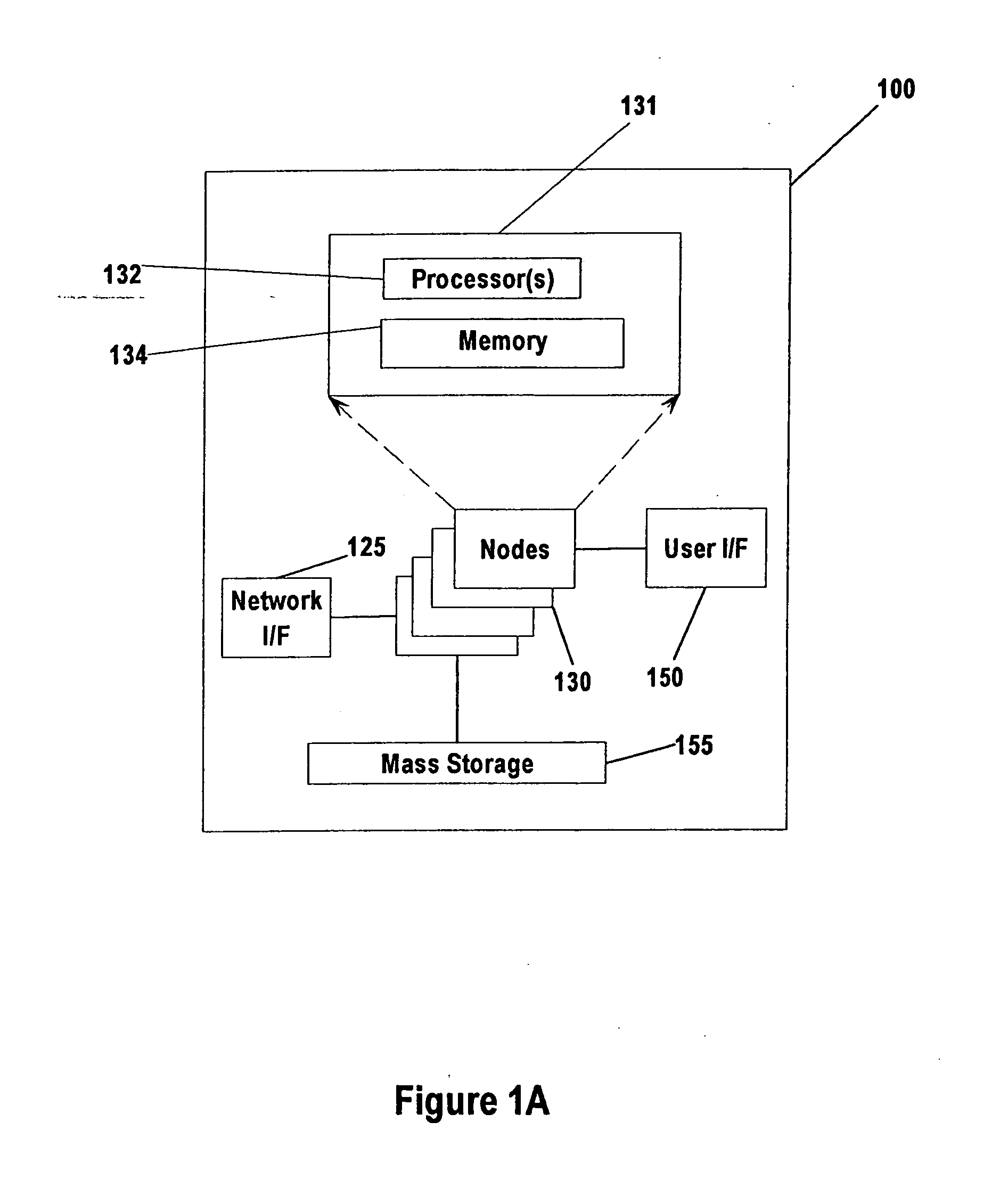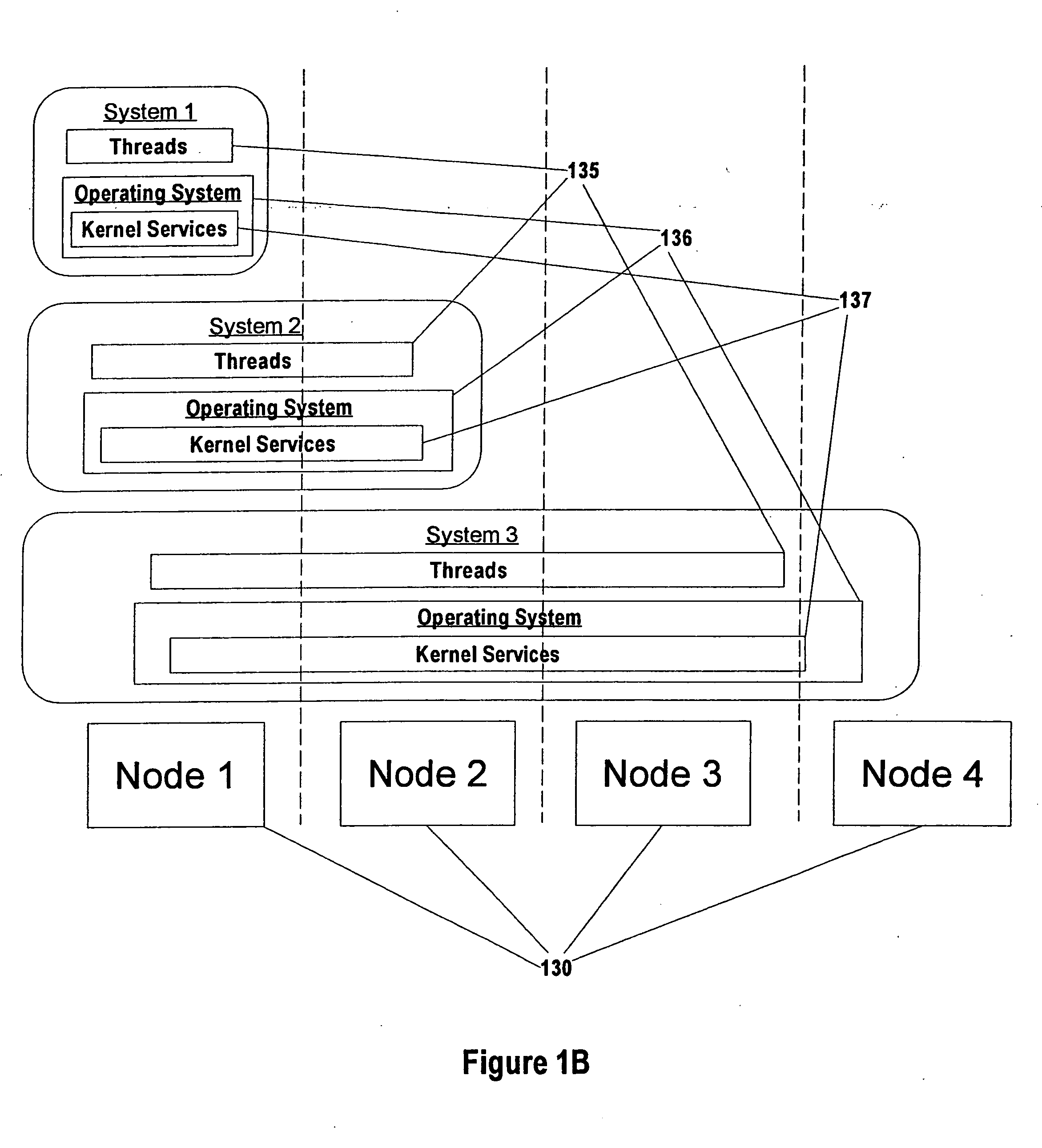Mechanism for reducing remote memory accesses to shared data in a multi-nodal computer system
a multi-nodal computer system and remote memory technology, applied in the field of job/thread handling, can solve the problems of data access perspective, inability to address the frequent problem of easy to see how significant the inefficiency of multi-nodal memory access to shared data is
- Summary
- Abstract
- Description
- Claims
- Application Information
AI Technical Summary
Benefits of technology
Problems solved by technology
Method used
Image
Examples
Embodiment Construction
[0023] Turning now to the drawings, FIG. 1A shows some of the operational components used in the computing apparatus of the preferred embodiment of the present invention. Computer apparatus 100 is an enhanced IBM iSeries computer system, although other computers could be used. Depicted components include processing nodes 130, network interface 125, user interface 150, and mass storage 155. Computer apparatus 100 of the preferred embodiment includes four processing nodes, although more or fewer nodes could be used. Network interface 125 is used to communicate with other computer systems. User interface 150 is used to accept commands and relay information to the one or more users of computer system 100.
[0024] An exploded view of one of Nodes 130 is also shown (i.e., Node 131). Node 131 contains Processor(s) 132 and Memory 134. In the preferred embodiment, each node can include up to eight Processors 132, although other configurations that include more or fewer processors are possible...
PUM
 Login to View More
Login to View More Abstract
Description
Claims
Application Information
 Login to View More
Login to View More - R&D
- Intellectual Property
- Life Sciences
- Materials
- Tech Scout
- Unparalleled Data Quality
- Higher Quality Content
- 60% Fewer Hallucinations
Browse by: Latest US Patents, China's latest patents, Technical Efficacy Thesaurus, Application Domain, Technology Topic, Popular Technical Reports.
© 2025 PatSnap. All rights reserved.Legal|Privacy policy|Modern Slavery Act Transparency Statement|Sitemap|About US| Contact US: help@patsnap.com



